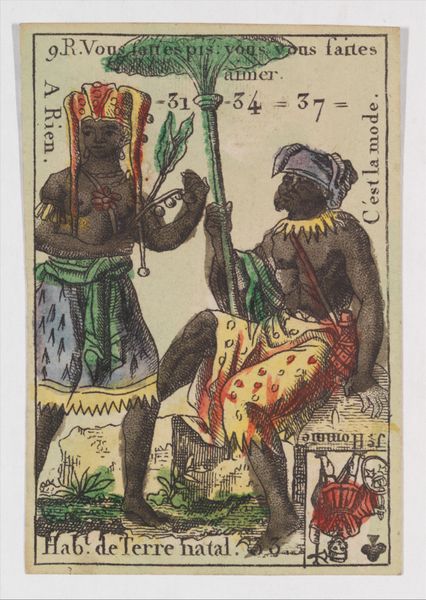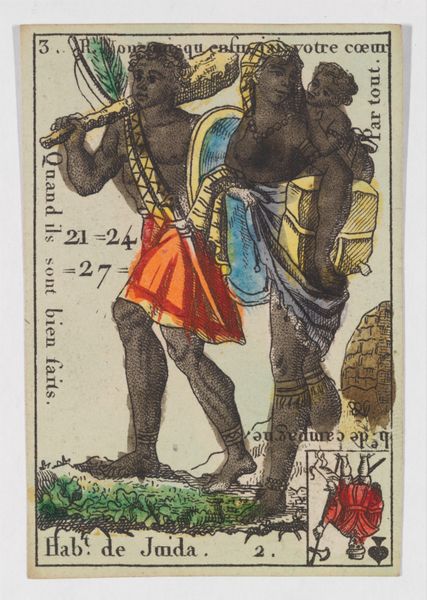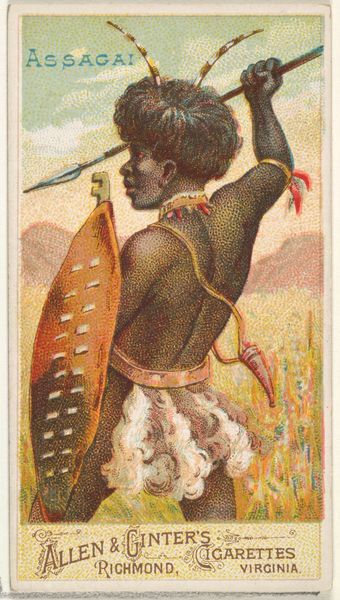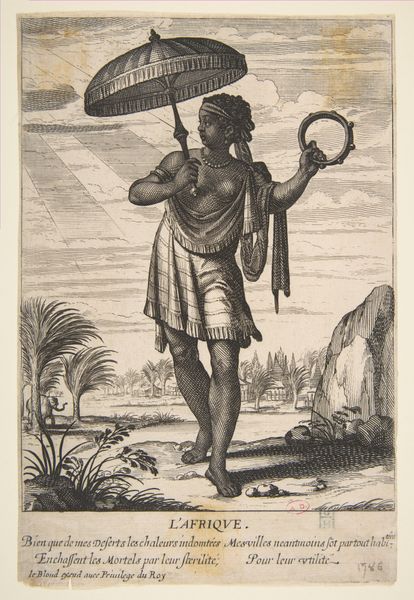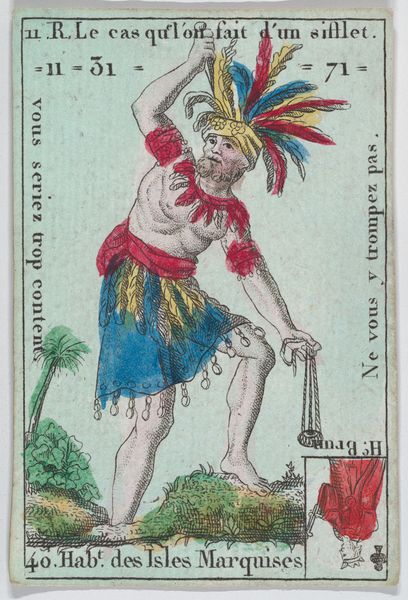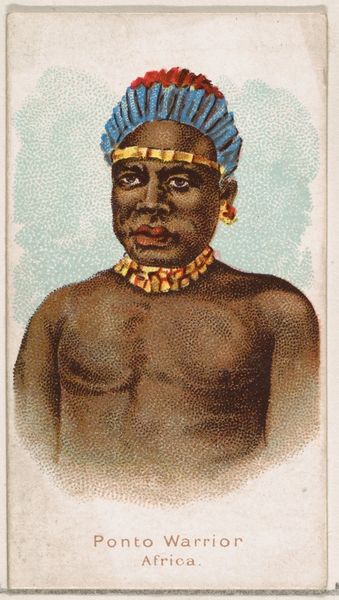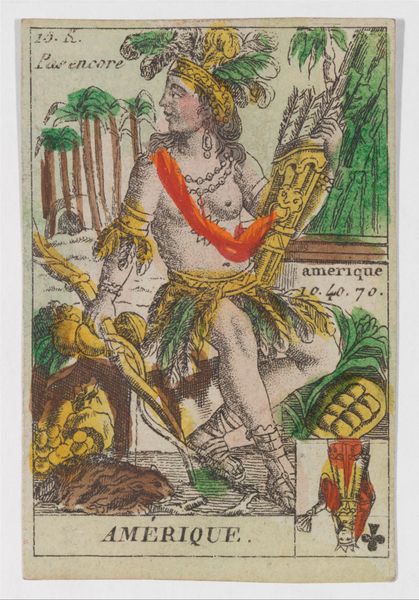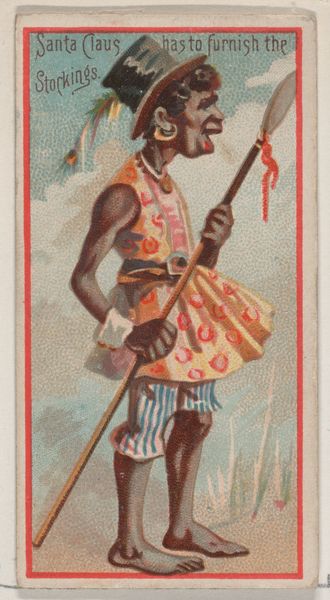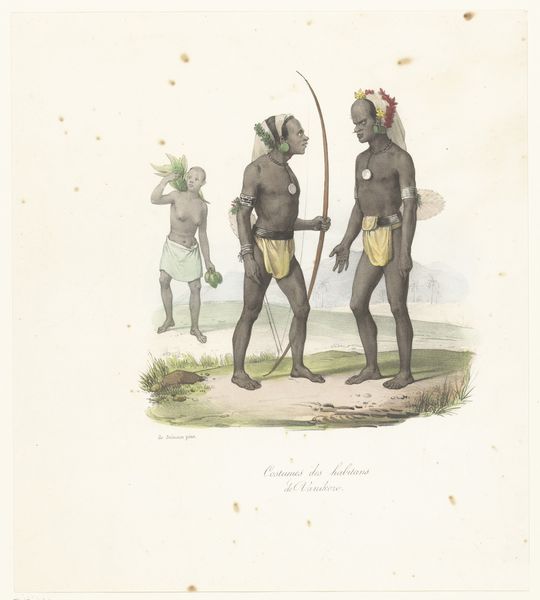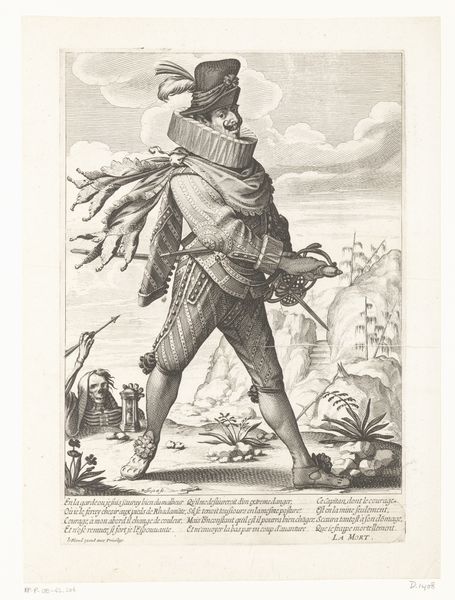
Hab.t d'Ardra, from the playing cards (for quartets) "Costumes des Peuples Étrangers" 18th century
0:00
0:00
drawing, coloured-pencil, print
#
portrait
#
drawing
#
coloured-pencil
# print
#
figuration
#
coloured pencil
#
orientalism
#
costume
#
genre-painting
Dimensions: 3 3/16 × 2 1/16 in. (8.1 × 5.3 cm)
Copyright: Public Domain
This playing card from the set "Costumes des Peuples Étrangers" depicts two figures identified as inhabitants of Ardra, now part of Benin. Observe the men’s garments: skirts wrapped around their waists, decorative adornments, which, in their unique combination, signal identity and cultural belonging. Such depictions connect to a long history of representing foreign peoples in European art. Consider the "Four Continents" allegories prevalent since the Renaissance, where Africa is often symbolized by exoticized figures in similar attire. Yet, these images were rarely neutral; often, they reinforced European notions of the "Other," embodying both curiosity and a sense of superiority. The artist, working anonymously, was influenced by existing visual tropes, consciously or unconsciously perpetuating specific narratives. Reflect on the psychological dimension: what subconscious anxieties or desires underpinned the creation and consumption of these images? The image's power lies in its ability to evoke emotions, engaging viewers on a level that transcends mere representation. These symbols have journeyed across time, resurfacing and evolving. Each age reinterprets them, imbuing them with new significance in an unending cultural dialogue.
Comments
No comments
Be the first to comment and join the conversation on the ultimate creative platform.

